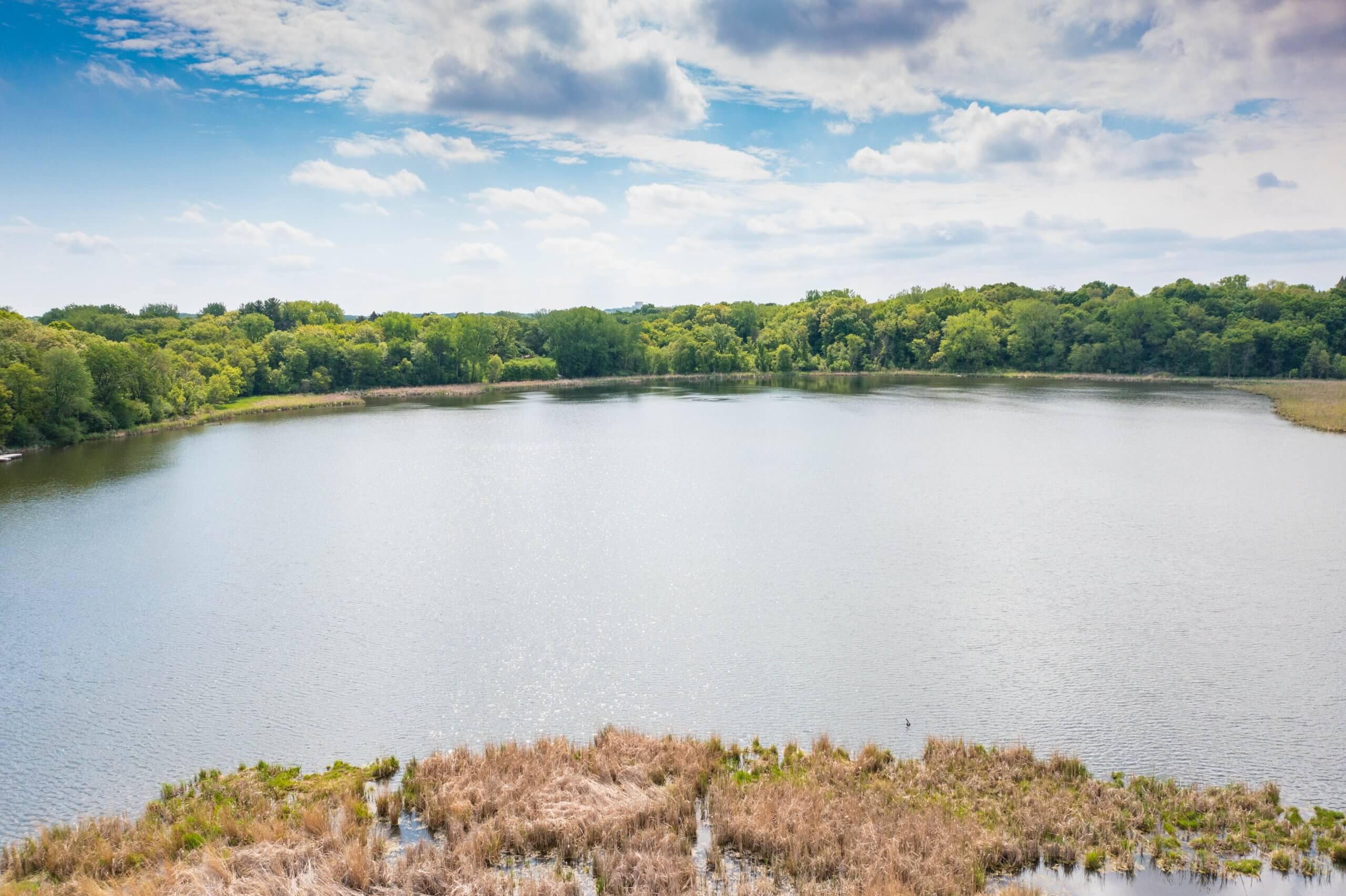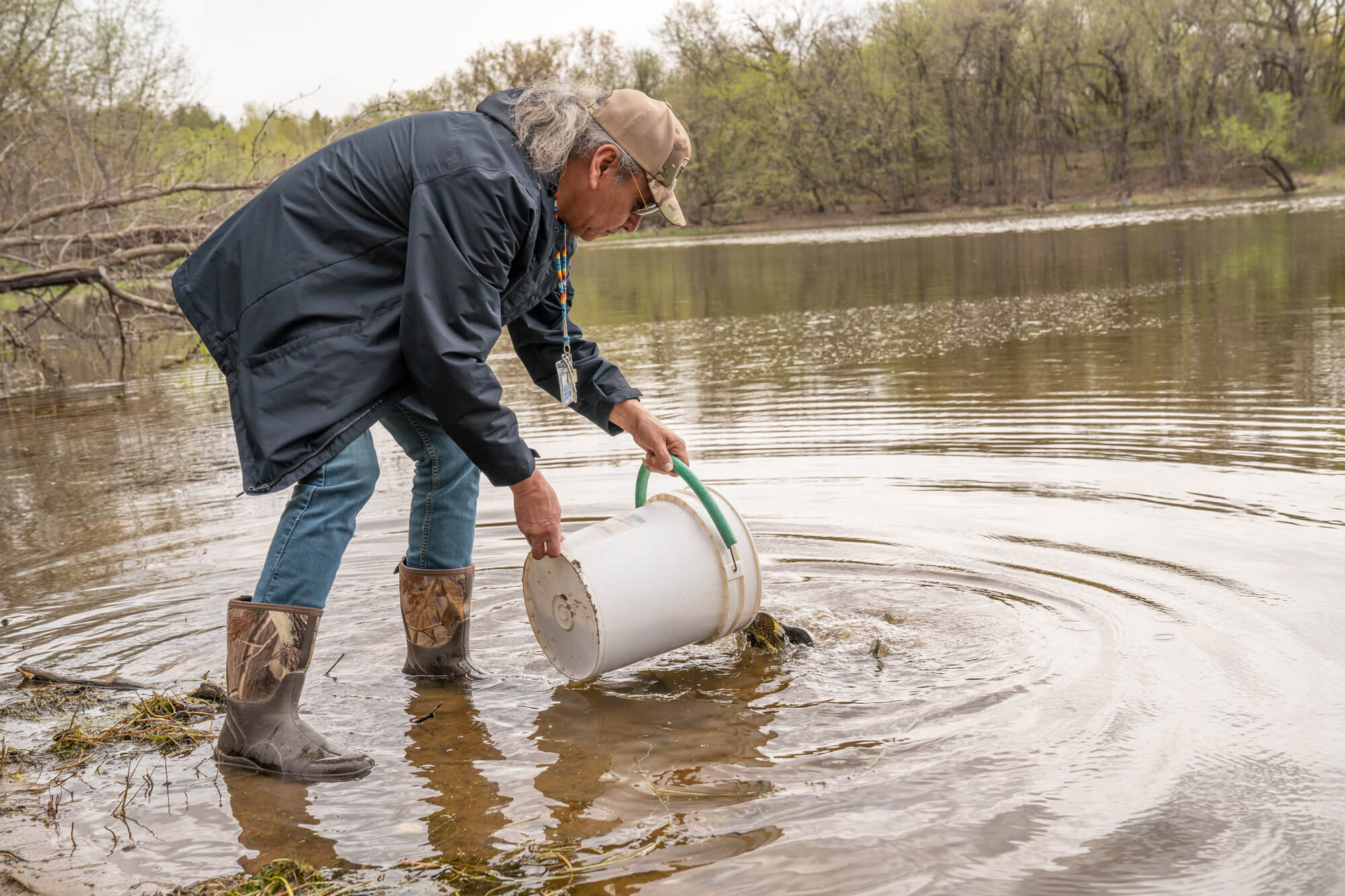
The SMSC’s environmental stewardship includes wide-ranging efforts to protect, preserve, and restore all of our local water resources.
Our water stewardship efforts are reflected in the following ways:
- Extensive water monitoring program.
- Stormwater and wastewater treatment for reuse in the irrigation system.
- Our work to prevent and reverse the effects of water pollution.
- Maintaining two weather stations to track local conditions and long-term trends.
- Ongoing commitment to identify new and better ways to support healthy waters.
Surface Water
The Natural Resources Department helps care for the many lakes, ponds, streams, springs, and wetlands which are present on tribal lands. Activities include researching, monitoring, protecting, and improving these water features so that they continue to provide rich wildlife habitat and contribute to our Community’s well-being for generations to come.
The SMSC’s lands are perched above the Minnesota River and at the top of local watersheds, including the Prior Lake Outlet Minor Watershed, Lower Sand Creek Minor Watershed and City of Shakopee Minor Watershed. Protecting and improving SMSC waters has a direct effect on the quality of water flowing downstream to our neighbors.
For 25 years, the SMSC has monitored the health and water quality of its lakes, streams, wetlands, and springs. The SMSC’s Water Resources team collects data on compounds of concern including chloride, phosphorus, and nitrogen, and monitors biological indicators for aquatic health and measure properties like dissolved oxygen, conductivity, and the flow of water entering and leaving SMSC lands. All this work is done with the goal of ensuring that tribal waters are clean and provide a safe and healthy resource—for tribal members and surrounding communities—for generations to come.
SMSC’s water-centric best management practices include green roofs, pervious pavement, rain gardens, street sweeping, implementing a winter salt management plan, and using low-impact development principles.
Groundwater
The Natural Resources Department helps protect the aquifers that provide 100% of the drinking water on tribal lands. Activities include wellhead and overall groundwater management, sealing abandoned wells, and protection of the surface waters that ultimately feed groundwater sources. The production of drinking water and reclamation services are performed by the SMSC Public Works Department.
Water Quality Monitoring

The Natural Resources Department staff have been sampling SMSC waterbodies for over 25 years to monitor indicators of aquatic health. This data is used to determine historical trends and guide management activities for SMSC lakes and streams.
A large component of local surface waters is stormwater runoff, which can transmit unwanted sediment, nutrients and other pollutants with it. Stormwater can also disrupt natural water temperatures and water levels. The SMSC employs a variety of techniques to reduce the impact of stormwater on our lakes and streams including rain gardens, green roofs, pervious pavement, street sweeping, infiltration areas and mitigation wetlands.
Best Managment Practices
Education and Outreach

Earth Week
Every April, the Natural Resources Department hosts Earth Week, inspired by Earth Day. Since 2000, Earth Week has educated thousands of people about sustainable practices, water issues, alternative energy, habitat management, and many other natural resources related topics.
Water Resources staff hosts a summer educational series focused on water related topics for children ages 7-12. This offers youth an opportunity for outdoor learning to explore and learn about the natural world around them.
Notable Water Projects

Artic Lake Restoration
The SMSC regularly works with local, state and federal governments, and community groups such as lake associations, and many other water stakeholders on mutually beneficial projects, such as the restoration and improvement of Arctic Lake. This project included the installation of an iron-enhanced sand filter, drainage and storage enhancements, and planting a prairie buffer. This collaborative work helps build a better community for all.

Water Reuse
To support responsible water use, the SMSC has an irrigation system that uses recycled water from its Water Reclamation Facility to irrigate maintained green space on the reservation. Cleaned effluent water is discharged from the facility, and flows through a series of ponds and wetlands where it joins other stormwater sources. Then it is pumped and piped for irrigation in the surrounding areas. Saving groundwater for drinking and personal use while reusing excess surface water for irrigation is an important conservation measure.
Dakotah! Ice Center Pervious Pavement
The 72,000-square-foot Dakotah! Ice Center was designed with state-of-the-art energy efficiency and environmentally friendly components. In addition to a 32,000-square-foot green roof, 16 solar panels, rain gardens, and recycled benches, the ice center features 14,000 square feet of permeable composite pavers installed along the parking lot center aisle and at the entrance of the facility. Lightweight, durable, and maintenance-free, the pavers are made from 95% recycled tire rubber and plastics and are manufactured with zero waste or harmful emissions. Every 1,000 square feet of these pavers saves 500 scrap tires and 15,000 plastic bottles from landfills. At the end of their lifecycle, the pavers can be removed and recycled into new pavers.

Pike Lake Restoration
One of the challenges is the presence of invasive common carp, which impacts water quality by disrupting the lake bottom, uprooting aquatic vegetation, and releasing nutrients into the water column. During carp removal in February 2021, it was discovered that Pike Lake suffered significant winter kill due to lake of oxygen in the water. While the winter kill reduced the carp population, it also decimated the once-thriving bluegill, crappie, and bass populations.
To help restore the fish population to healthy levels, the SMSC has released 8,500 bluegill, 3,750 yellow perch, and 1,000 black crappie into the lake. Bluegill is a native predator of common carp eggs and naturally controls the population of this invasive species. The SMSC continues to survey the fishery to help keep the lake’s ecosystem balanced and healthy.
Navigation
- Habitats
- Prescribed Burns
- Invasive Species
- Wildlife
- Surveys
- Bird Boxes
- Water Managment
- Water Reports
